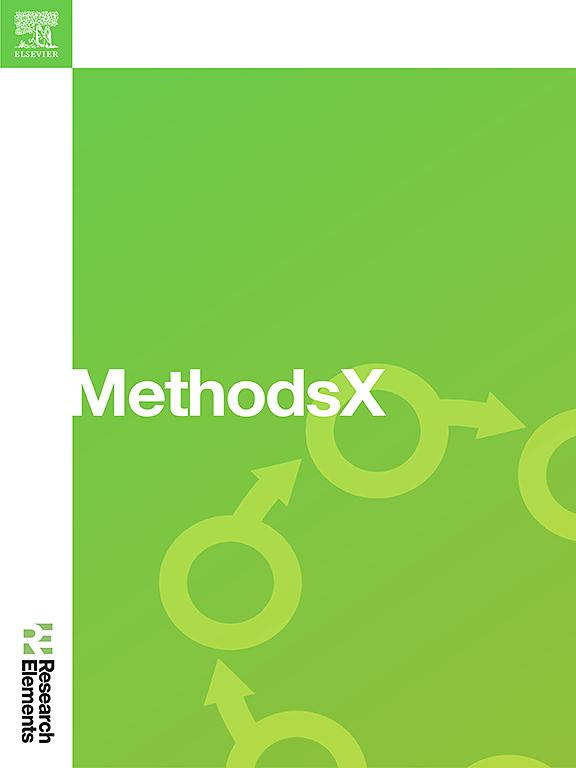基于吉布斯采样的贝叶斯MCMC预定时信号交叉口非均匀交通饱和流量估计
IF 1.9
Q2 MULTIDISCIPLINARY SCIENCES
引用次数: 0
摘要
提前设置信号交叉口严重加剧了交通拥堵,尤其是在印度尼西亚等新兴经济体中常见的异质性交通状况下。基础饱和流量的准确估计是可靠的通行能力评估的基础,它直接影响到有效的交叉口设计和运营。然而,目前《印度尼西亚公路容量指南》(IHCG, 2023)中概述的BSFR估计方法依赖于《印度尼西亚公路容量手册》(IHCM, 1997)中过时的线性模型,这些模型不足以解决当代异构交通复杂性问题。为了提高BSFR的估计精度,提出了一种采用Gibbs抽样的贝叶斯马尔可夫链蒙特卡罗(MCMC)模型。与现有的IHCG方法相比,Bayesian MCMC模型的均方根误差近似(RMSEA)为8.638%,RMSEA高达51.428%,可以实现更精确的交叉口容量设计。此外,该模型将IHCG方法相关的BSFR高估降低了约42.79%,突出了贝叶斯MCMC方法在有效应对异构交通挑战、加强交通管理策略和优化交叉口运营方面的潜力。贝叶斯方法为量化不确定性提供了一个概率框架,允许结合先验知识来增强参数估计的灵活性,并有效地减轻模型过拟合。所建立的模型具有稳健的统计有效性,beta参数均值为403.30,标准差为8.66,蒙特卡罗标准误差(MCSE)为0.0008,具有较高的可靠性和预测精度。所提出的BSFR模型在拟合经验数据方面表现出优异的性能,RMSE为240.403 PCU/g/h/We, RMSEA为8.638%,表明模型在可接受阈值(< 10%)内拟合良好。本文章由计算机程序翻译,如有差异,请以英文原文为准。

Bayesian MCMC with Gibbs sampling for saturation flow rate estimation in heterogeneous traffic at pretimed signalized intersections
Pretimed signalized intersections significantly contribute to traffic congestion, especially under the heterogeneous traffic conditions commonly observed in emerging economies such as Indonesia. Accurate estimation of the base saturation flow rate (BSFR) is essential for reliable capacity assessment, which influences effective intersection design and operation. However, the current BSFR estimation methods outlined in the Indonesian Highway Capacity Guidelines (IHCG, 2023) rely on outdated linear models derived from the Indonesian Highway Capacity Manual (IHCM, 1997), which are inadequate for addressing contemporary heterogeneous traffic complexities. This study introduces a Bayesian Markov Chain Monte Carlo (MCMC) model employing Gibbs sampling to improve BSFR estimation accuracy. The Bayesian MCMC model achieved a Root Mean Square Error Approximation (RMSEA) of 8.638 % compared to the existing IHCG method, which produced an RMSEA of up to 51.428 %, enabling a more precise intersection capacity design. Additionally, the developed model reduced the BSFR overestimation associated with the IHCG method by approximately 42.79 %, highlighting the potential of Bayesian MCMC methods to effectively address heterogeneous traffic challenges, enhance traffic management strategies, and optimize intersection operations.
The Bayesian approach provides a probabilistic framework for quantifying uncertainty, allows for the incorporation of prior knowledge to enhance parameter estimation flexibility, and effectively mitigates model overfitting.
The developed model demonstrates robust statistical validity, characterized by a mean beta parameter value of 403.30, standard deviation of 8.66, and Monte Carlo Standard Error (MCSE) of 0.0008, confirming high reliability and predictive precision.
The proposed BSFR model exhibited superior performance in fitting empirical data, as evidenced by an RMSE of 240.403 PCU/g/h/We and RMSEA of 8.638 %, indicating an excellent model fit within acceptable thresholds (<10 %).
求助全文
通过发布文献求助,成功后即可免费获取论文全文。
去求助
来源期刊

MethodsX
Health Professions-Medical Laboratory Technology
CiteScore
3.60
自引率
5.30%
发文量
314
审稿时长
7 weeks
期刊介绍:
 求助内容:
求助内容: 应助结果提醒方式:
应助结果提醒方式:


